Please consult with your health-care provider before making any dietary changes based on any of the information provided here.
If you live in Quebec and do not have a family doctor, you can [ sign up here ].
Anatomy and Physiology
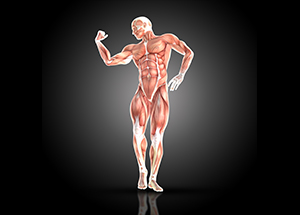
Anatomy and Physiology is a dynamic textbook for the two-semester human anatomy and physiology course for life science and allied health majors. The book is organized by body system and covers standard scope and sequence requirements.
More InfoHuman Nutrition

This textbook serves as an introduction to nutrition. The book covers basic concepts in human nutrition, key information about essential nutrients, basic nutritional assessment, and nutrition across the lifespan.
More InfoPrinciples of Nutrition
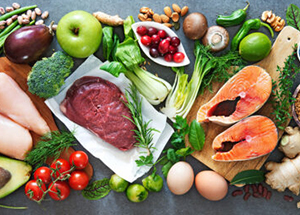
A great textbook to get started on a journey into the world of health and nutrition. The first focus will be to demonstrate that nutritional science is an evolving field of study, continually being updated and supported by research, studies, and trials.
More InfoMicrobiology
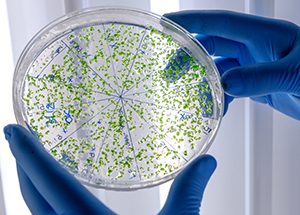
Microbiology covers the scope and sequence requirements for a single-semester microbiology course for non-majors. The book presents the core concepts of microbiology with a focus on applications for careers in allied health. The pedagogical features of the text make the material interesting and accessible while maintaining the career-application focus and scientific rigor inherent in the subject matter.
More InfoChemistry

Chemistry 2e is designed to meet the scope and sequence requirements of the two-semester general chemistry course. The textbook provides an important opportunity for students to learn the core concepts of chemistry and understand how those concepts apply to their lives and the world around them. The book also includes a number of innovative features, including interactive exercises and real-world applications.
More InfoBiology

Biology 2e is designed to cover the scope and sequence requirements of a typical two-semester biology course for science majors. The text provides comprehensive coverage of foundational research and core biology concepts through an evolutionary lens. Biology includes rich features that engage students in scientific inquiry, highlight careers in the biological sciences, and offer everyday applications.
More Info
Cholesterol Overview
“Cholesterol is an organic molecule and is a sterol form of lipid biosynthesized by all animal cells and a crucial component of cell membranes. It has a unique structure made of four linked hydrocarbon rings, forming a bulky steroid structure”
Functional Role Of Cholesterol
Cholesterol is mainly synthesized in the liver and approximately 25 percent of cholesterol in the body is localized in brain tissue. It is the precursor of many steroid hormones, such as testosterone and estradiol. It is also the precursor of vitamins E and K.
Cholesterol is the precursor of bile salts, which help in the breakdown of fats and their subsequent absorption by cells. Although cholesterol is often spoken of in negative terms, it is necessary for the proper functioning of the body. It is a key component of the plasma membranes of animal cells.
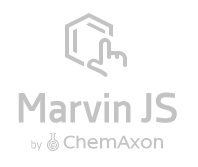
Steroid Hormones
Steroids are lipids that have a hydrocarbon skeleton with four fused rings; different steroids have different functional groups attached to the carbon skeleton. Cholesterol is a precursor of steroid hormones, which are are small hydrophobic ligands that can diffuse easily. Some include the female sex hormone, estradiol, which is a type of estrogen; the male sex hormone, testosterone. Cholesterol is also involved in the manufacture of other hormones such as Aldosterone, an adrenal gland hormone. Other hydrophobic hormones include thyroid hormones and vitamin D. In order to be soluble in blood, hydrophobic ligands must bind to carrier proteins while they are being transported through the bloodstream.
|
|
Steroid hormones have similar chemical structures to their precursor, cholesterol. Because these molecules are small and hydrophobic, they can diffuse directly across the plasma membrane into the cell, where they interact with internal receptors. |
Lipids
Lipids are insoluble organic compounds, composed of both fats and oils. They yield a high amount of energy and chemically consist of carbon, hydrogen, and oxygen.
The three main types of lipids are
-
- Triglycerides are the fats and oils in the dietary world. Fats can be solid or liquid at room temperature, depending on the structure. These make up a majority of lipids in the diet and often found in processed saturated fat containing foods. Triglycerides can also naturally be found in foods, such as nuts, olives and avocados.
-
- Phospholipids are water-soluble and found in both plants and animals. Their major importance relates to their role in the formation of the structural membranes of cells.
- Sterols are the least common type of lipid, with cholesterol being the most common sterol. Cholesterol is needed for cell membranes, production of sex hormones, vitamin D, and bile salts.

Cholesterol is very important for the production
of bile acids, which are required for the breakdown
fat-soluble vitamins A, D, E, and K and absorption.
Fats and Fat Soluble Vitamins
Vitamins A, D, E, and K—the fat-soluble vitamins—are mainly found in foods containing fat. Some fat-soluble vitamins (such as vitamin A) are also found in naturally fat-free foods such as green leafy vegetables, carrots, and broccoli.
These vitamins are best absorbed when combined with foods containing fat. Fats also increase the bioavailability of compounds known as phytochemicals, which are plant constituents such as lycopene (found in tomatoes) and beta- carotene (found in carrots).
Phytochemicals are believed to promote health and well-being. As a result, eating tomatoes with olive oil or salad dressing will facilitate lycopene absorption. Other essential nutrients, such as essential fatty acids, are constituents of the fats themselves and serve as building blocks of a cell.
What Are Phytochemicals?
Phytochemicals are chemicals in plants that may provide some health benefit. Carotenoids are one type of phytochemical. Phytochemicals also include indoles, lignans, phytoestrogens, stanols, saponins, terpenes, f lavonoids, carotenoids, anthocyanidins, phenolic acids, and many more. They are found not only in fruits and vegetables, but also in grains, seeds, nuts, and legumes. Many phytochemicals act as antioxidants, but they have several other functions, such as mimicking hormones, altering absorption of cholesterol, inhibiting inflammatory responses, and blocking the actions of certain enzymes.
Phytochemicals are present in small amounts in the food supply, and although thousands have been and are currently being scientifically studied, their health benefits remain largely unknown. Also largely unknown is their potential for toxicity, which could be substantial if taken in large amounts in the form of supplements. Moreover, phytochemicals often act in conjunction with each other and with micronutrients. Thus, supplementing with only a few may impair the functions of other phytochemicals or micronutrients. As with the antioxidant vitamins, it is the mixture and variety of phytochemicals in foods that are linked to health benefits.
Energy Source
- Cholesterol as well as triglycerides is an important source of energy for the body, particularly when glucose supply is low.
- The lipids that are connected to the glucose pathways are cholesterol and triglycerides.
- The synthesis of cholesterol starts with acetyl CoA and proceeds in only one direction.
- The process cannot be reversed, and ATP is not produced.

The lymphatic system transports the chylomicrons into the bloodstream, which are then transported into the liver. The hepatic cells then take up the cholesterol contained within the chylomicrons. They are moved to cells to be used as energy or stored in the adipose fat tissue. As lipids are insoluble in water, they must bind to proteins to form lipoproteins in order to be transported around the body. There are different types of lipoproteins in the body, all which have an individual role.
Chylomicrons are transporters of fats throughout the watery environment within the body. They are made in the walls of the intestine and then absorbed into the lymphatic system in the intestine, which plays an important role in the transport function in the body. After about ten hours of circulating throughout the body, chylomicrons gradually release their triglycerides until all that is left of their composition is cholesterol-rich remnants. These remnants are used as raw materials by the liver to formulate specific lipoproteins. Following is a list of the various lipoproteins and their functions:
VLDLs. Very low-density lipoproteins are made in the liver from remnants of chylomicrons and transport triglycerides from the liver to various tissues in the body. As the VLDLs travel through the circulatory system, the lipoprotein lipase strips the VLDL of triglycerides. As triglyceride removal persists, the VLDLs become intermediate- density lipoproteins.
IDLs. Intermediate-density lipoproteins transport a variety of fats and cholesterol in the bloodstream and are a little under half triglyceride in composition. While travelling in the bloodstream, cholesterol is gained from other lipoproteins while circulating enzymes strip its phospholipid component. When IDLs return to the liver, they are transformed into low-density lipoprotein.
HDLs. High-density lipoproteins are responsible for carrying cholesterol out of the bloodstream and into the liver, where it is either reused or removed from the body with bile. HDLs have a very large protein composition coupled with low cholesterol content (20 to 30 percent) compared to the other lipoproteins. Hence, these high-density lipoproteins are commonly called “good cholesterol.”
LDLs. As low-density lipoproteins are commonly known as the “bad cholesterol” it is imperative that we understand their function in the body so as to make healthy dietary and lifestyle choices. LDLs carry cholesterol and other lipids from the liver to tissue throughout the body. LDLs are comprised of very small amounts of triglycerides, and house over 50 percent cholesterol and cholesterol esters.
How does the body receive the lipids contained therein? As the LDLs deliver cholesterol and other lipids to the cells, each cell’s surface has receptor systems specifically designed to bind with LDLs. Circulating LDLs in the bloodstream bind to these LDL receptors and are consumed. Once inside the cell, the LDL is taken apart and its cholesterol is released. In liver cells these receptor systems aid in controlling blood cholesterol levels as they bind the LDLs.
A deficiency of these LDL binding mechanisms will leave a high quantity of cholesterol traveling in the bloodstream, which can lead to heart disease or atherosclerosis. Diets rich in saturated fats will prohibit the LDL receptors, which are critical for regulating cholesterol levels.
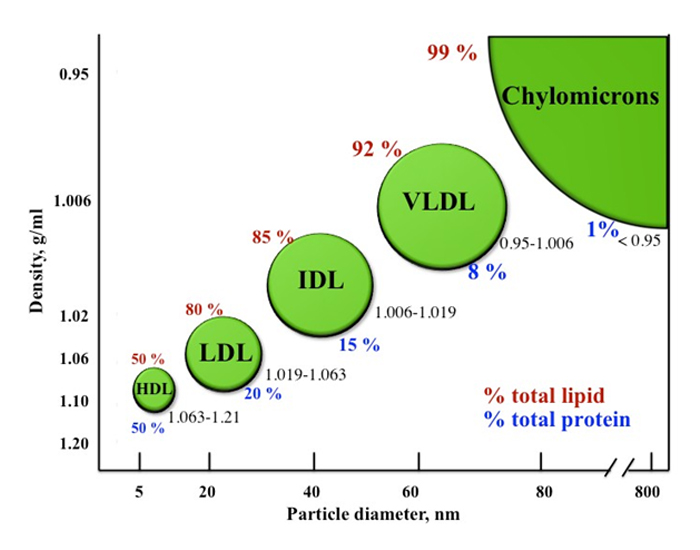
The classification of the major types of lipoproteins are based on their densities.
Density range is shown as well as lipid (red) and protein (blue) content.
(Diagram not to scale)

Water-soluble molecules, such as some vitamins, minerals, sugars, and many proteins, move independently in blood. Fat-soluble vitamins, triglycerides, cholesterol, and other lipids are packaged into lipoproteins that allow for transport in the watery milieu of blood. Many proteins, drugs, and hormones are dependent on transport carriers, primarily by the plasma protein albumin.
Cholesterol is an essential component of cell membranes for structure and integrity.
The Cell Membrane
Cells can block or exclude some substances, take in others, and excrete still others, all in controlled quantities. Plasma membranes enclose the borders of cells, but rather than being a static bag, they are dynamic and constantly in flux. The plasma membrane must be sufficiently flexible to allow certain cells, such as red blood cells and white blood cells, to change shape as they pass through narrow capillaries.
These are the more obvious functions of a plasma membrane. In addition, the surface of the plasma membrane carries markers that allow cells to recognize one another, which is vital as tissues and organs form during early development, and which later plays a role in the “self” versus “non-self” distinction of the immune response.
The plasma membrane is made up primarily of a bilayer of phospholipids with embedded proteins, carbohydrates, glycolipids, and glycoproteins, and, in animal cells, cholesterol. The amount of cholesterol in animal plasma membranes regulates the fluidity of the membrane and changes based on the temperature of the cell’s environment. In other words, cholesterol acts as antifreeze in the cell membrane and is more abundant in animals that live in cold climates.
The main fabric of the membrane is composed of two layers of phospholipid molecules, and the polar ends of these molecules (which look like a collection of balls in an artist’s rendition of the model) are in contact with aqueous fluid both inside and outside the cell. Thus, both surfaces of the plasma membrane are hydrophilic. In contrast, the interior of the membrane, between its two surfaces, is a hydrophobic or nonpolar region because of the fatty acid tails. This region has no attraction for water or other polar molecules.
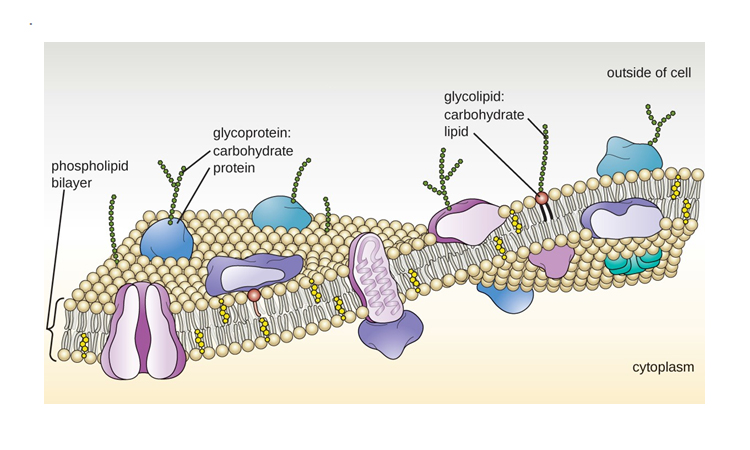
Fluid Mosaic Model and plasma membrane
Scientists identified the plasma membrane in the 1890s, and its chemical components in 1915. The principal components they identified were lipids and proteins. The explanation, the fluid mosaic model, has evolved somewhat over time, but it still best accounts for plasma membrane structure and function, as we now understand them. The plasma membrane of eukaryotic cells is composed mainly of phospholipids forming a bilayer with embedded peripheral and integral proteins.
These membrane components move within the plane of the membrane according to the fluid mosaic model. Eukaryotic membranes contain sterols, including cholesterol, that alter membrane fluidity. The fluid mosaic model describes the structure of the plasma membrane as a mosaic of components—including phospholipids, cholesterol, proteins, and carbohydrates—in which the components are able to flow and change position, while maintaining the basic integrity of the membrane.
Plasma membranes range from 5–10 nm thick. As a comparison, human red blood cells, visible via light microscopy, are approximately 8 µm thick, or approximately 1,000 times thicker than a plasma membrane. The plasma membrane contains cholesterol for the maintenance of membrane, as well as glycoproteins and glycolipids that are important in the recognition other cells or pathogens.
The fluid mosaic model of the plasma membrane structure describes the plasma membrane as a fluid combination of phospholipids, cholesterol, proteins, and carbohydrates. The plasma membrane is a phospholipid bilayer with embedded proteins. There are other components, such as cholesterol and carbohydrates, which can be found in the membrane in addition to phospholipids and protein.
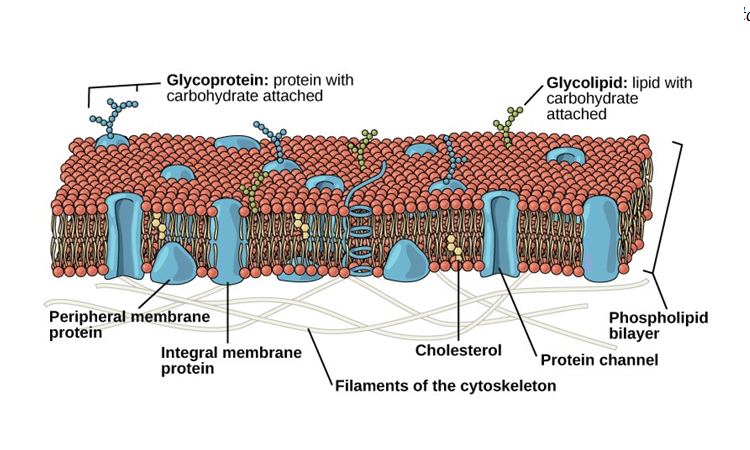
Bioavailability Of Cholesterol
The level of cholesterol in the body depend on the following processes:
- Synthesis – from the liver, endocrine organs, muscle and skin
- Dietary Absorption
- Excretion into bile
There will be a variation of the balance of the processes amongst individuals due to the difference in synthesis, dietary absorption and excretions. However, when absorbed in the intestine, approximately 75% is from biliary sources and 25% dietary sources.
Nutritional Status Of Cholesterol
Blood is the conduit of metabolic products and wastes, measuring the components of blood, and particular substances in blood, can reveal not only the health of blood, but also the health of other organ systems. The typical blood tests conducted can tell your physician about the functioning of a particular organ or about disease risk.
Many factors, such as physical activity level, diet, alcohol intake, and medicine intake can influence a person’s blood- test levels and cause them to fall outside the normal range, so results of blood tests outside the “normal” range are not always indicative of health problems.
Blood Tests
Substance Measured |
Indicates |
| Red-blood-cell count | Oxygen-carrying capacity |
| Hematocrit (red-blood-cell volume) | Anemia risk |
| White-blood-cell count | Presence of infection |
| Platelet count | Bleeding disorders, atherosclerosis risk |
| pH | Metabolic, kidney, respiratory abnormalities |
| Albumin | Liver, kidney, and Crohn’s disease, dehydration, protein deficiency |
| Bilirubin | Liver-function abnormality |
| Oxygen/Carbon Dioxide | Respiratory or metabolic abnormality |
| Hemoglobin | Oxygen-carrying capacity |
| Iron | Anemia risk |
| Magnesium | Magnesium deficiency |
| Electrolytes (calcium, chloride, magnesium, potassium) | Many illnesses (kidney, metabolic, etc.) |
| Cholesterol | Cardiovascular disease risk |
| Triglycerides | Cardiovascular disease risk |
| Glucose | Diabetes risk |
| Hormones | Many illnesses (diabetes, reproductive abnormalities) |
For healthy total blood cholesterol, the desired range you would want to maintain is under 200 mg/dL. More specifically, when looking at individual lipid profiles, a low amount of LDL and a high amount of HDL prevents excess build up of cholesterol in the arteries and wards off potential health hazards.
An LDL level of less than 100mg/dL is ideal while an LDL level above 160 mg/dL would be considered high. In contrast, a low value of HDL is a tell tale sign that a person is living with major risks for disease.
According to the NIH, the following desired values are used to measure an overall lipid profile:
- LDL. Less than 160 mg/dL (if you have heart disease or diabetes, less than 100 mg/dL)
- HDL. Greater than 40–60 mg/dL
- Triglycerides. 10–150 mg/dL
- VLDL. 2–38 mg/dL
Values of less than 40 mg/dL for men and 50 mg/dL for women mark a risk factor for developing heart disease. In short, elevated LDL blood lipid profiles indicate an increased risk of heart attack, while elevated HDL blood lipid profiles indicate a reduced risk.
http://www.nhlbi.nih.gov/health/health-topics/topics/bdt/types.html
Published January 6, 2012. | Accessed September 22,2017.
Excess Cholesterol And Disease
Although cholesterol is needed for bodily functions as stated earlier, excess intake, especially above normal range can be harmful to health. If LDL cholesterol elevates to abnormal levels, it will lead to a development of hyper cholesterolemia, and increases the risk of atherosclerosis, which a build of plaque in the arteries.
This is turn increases the risk of cardiovascular diseases, including stroke, hypertension and heart disease.The main cause of hyper cholesterolemia is excess consumption of cholesterol from the diet; however, it can also be genetically linked. Genetic form of hyper cholesterolemia, is known as Familial hyper cholesterolemia. Having Metabolic Syndrome increases the risk of cardiovascular diseases further. This syndrome is classified cluster of conditions that occur together.
These conditions include increased blood pressure, high blood sugar, excess body fat around the waist, and abnormal cholesterol or triglyceride levels. Treatment depends on the extent of the disease, related comorbidities and individual circumstances. Nonetheless, education about healthier lifestyles options is a key part of treatment, including sensible dietary choices and physical activity. Although dietary cholesterol does have a small impact on overall blood cholesterol levels, but not as much as some people may think.
The average American female consumes 237 milligrams of dietary cholesterol per day and for males the figure is slightly higher—about 358 milligrams. Most people display little response to normal dietary cholesterol intake as the body responds by halting its own synthesis of the substance in favor of using the cholesterol obtained through food.
Genetic factors may also influence the way a person’s body modifies cholesterol. The 2015-2020 US Dietary Guidelines suggest limiting saturated fats, thereby indirectly limiting dietary cholesterol since foods that are high in cholesterol tend to be high in saturated fats also.
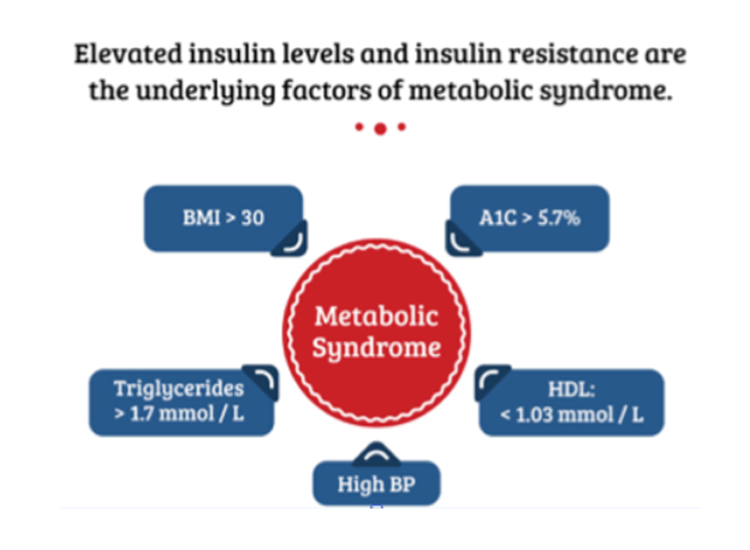
Fatty Liver
Alcohol stimulates the release of epinephrine from the kidneys. Epinephrine binds to receptors in the liver cells to stimulate the release of glucagon from the pancreas. Glucagon and epinephrine stimulate glycogenolysis in the liver cells. Epinephrine also stimulates the breakdown of triglycerides and glycerol into free fatty acids in adipose tissue and is released into the bloodstream and travel to the liver.
A portion of these triglycerides are stored in the liver cells; while, the remainder of these triglycerides are converted to very low-density lipoprotein (VLDL). The increased accumulation of both stored triglycerides and VLDL particles inside the liver cells causes a condition called fatty liver or hepatic steatosis. This can impair normal liver function. The more alcohol consumed, the more lipids produced and stored inside the liver cells. These effects are cumulative over time.
Watch Out for Saturated Fat and Cholesterol
The largest influence on blood cholesterol levels rests in the mix of saturated fat and trans fat in the diet. According to the Harvard School of Public Health, for every extra 2 percent of calories from trans fat consumed per day—about the amount found in a midsize order of French fries at a fast-food establishment—the risk of coronary heart disease increases by 23 percent1. A buildup of cholesterol in the blood can lead to brittle blood vessels and a blockage of blood flow to the affected area.
Interestingly, some naturally occurring trans fats do not pose the same health risks as their artificially engineered counterparts. These trans fats are found in ruminant animals such as cows, sheep, and goats, resulting in trans fatty acids being present in our meat, milk, and other dairy product supply. Reports from the US Department of Agriculture (USDA)
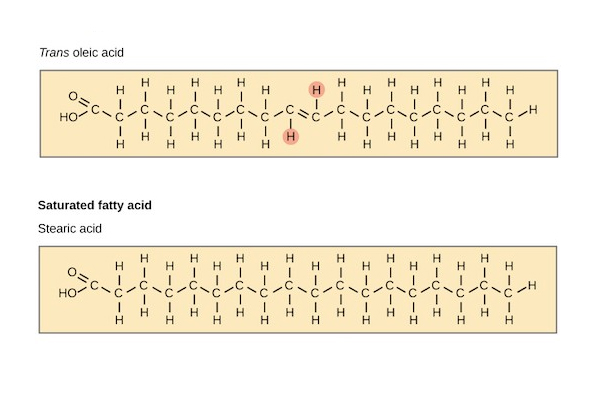
Trans Fatty Acids
In a trans fatty acid, the hydrogen atoms are attached on opposite sides of the carbon chain. Unlike cis fatty acids, most trans fatty acids are not found naturally in foods, but are a result of a process called hydrogenation.
Hydrogenation is the process of adding hydrogen to the carbon double bonds, thus making the fatty acid saturated (or less unsaturated, in the case of partial hydrogenation).
This is how vegetable oils are converted into semisolid fats for use in the manufacturing process. According to the ongoing Harvard Nurses’ Health Study, trans fatty acids have been associated with increased risk for coronary heart disease because of the way they negatively impact blood cholesterol levels.2
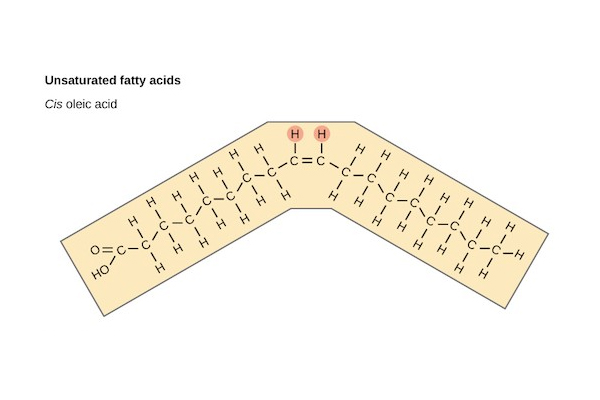
Figure 5.5 Structures of Saturated, Unsaturated, Cis and Trans fatty Acids
Unsaturated Fats
Unsaturated fats have a loose structure compared to saturated fats and are a preferred choice health-wise. There are two types of unsaturated fats:
- Polyunsaturated
- Monounsaturated
Polyunsaturated fats aid muscle function and blood clotting and must be obtained from food sources as the body does not make it. Polyunsaturated fatty acids are especially beneficial to consume because they both lower LDL and elevate HDL, thus contributing to healthy blood cholesterol levels.
Polyunsaturated fats are divided into two types: omega-3 and omega-6 fatty acids, which are heart protective. It is suggested that people consume omega-3 fatty acids such as alpha-linolenic acid in their diets regularly.
Good choices of omega -3 fatty acids include, oily fish, flaxseed oil, walnuts, hemp seeds, chia seeds, soybeans and oysters. Good choices for omega-6 fatty acids include oils such as corn, soybean, safflower, walnut and sunflower. Plant based monounsaturated fats are known to reduce the risk of cardiovascular disease and include olives, olive oil, peanut oil, nuts and seeds and avocado.
Essential Fatty Acids : Omega-3 and Omega-6
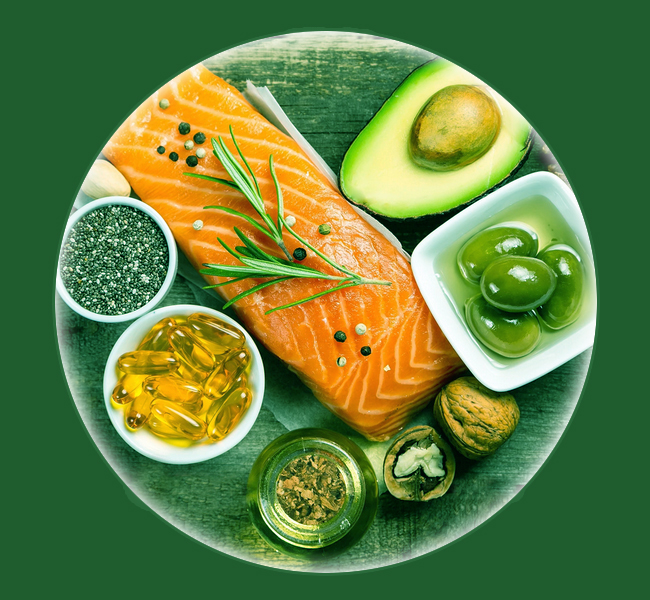
The typical western diet is characterized by an excessive consumption of foods high in omega-6 fatty acids. To gain proper balance between the two, increase your omega-3 fat intake by eating more fatty fish or other sources of omega-3 fatty acids at least two times per week.
The traditional Mediterranean diet incorporates many elements of the dietary choices of people living in Greece and southern Italy. The Mediterranean diet focuses on small portions of nutritionally-sound food. This diet features food from plant sources, including vegetables, fruits, whole grains, beans, nuts, seeds, breads and potatoes, and olive oil.
It also limits the consumption of processed foods and recommends eating locally grown foods rich in micronutrients and antioxidants. Other aspects of this eating plan include consuming fish and poultry at least twice per week, eating red meat only a few times per month, having up to seven eggs per week, and drinking red wine in moderation.
Unlike most diets, the Mediterranean diet does not cut fat consumption across the board. Instead, it incorporates low-fat cheese and dairy products, and it substitutes olive oil, canola oil, and other healthy oils for butter and margarine.
More than fifty years of nutritional and epidemiological research has shown that people who follow the Mediterranean diet have some of the lowest rates of chronic disease and the highest rates of longevity among the populations of the world. Studies have shown that the Mediterranean diet also helps to decrease excess body weight, blood pressure, blood fats, and blood sugar and insulin levels significantly.
It is suggested that people consume omega-3 fatty acids such as alpha-linolenic acid in their diets regularly. Polyunsaturated fatty acids are especially beneficial to consume because they both lower LDL and elevate HDL, thus contributing to healthy blood cholesterol levels. The study also reveals that saturated and trans fatty acids serve as.

DASH
The DASH-Sodium trial was a clinical trial, which evaluated the effects of a specified eating plan with or without reduced sodium intake. The DASH diet is an eating plan that is low in saturated fat, cholesterol, and total fat. Fruits, vegetables, low-fat dairy foods, whole-grain foods, fish, poultry, and nuts are emphasized while red meats, sweets, and sugar- containing beverages are mostly avoided. In this study, people on the low-sodium (1500 milligrams per day) DASH diet had mean systolic blood pressures that were 7.1 mmHg lower than people without hypertension not on the DASH diet. The effect on blood pressure was greatest in participants with hypertension at the beginning of the study who followed the DASH diet. Their systolic blood pressures were, on average, 11.5 mmHg lower than participants with hypertension on the control diet.5. Following the DASH diet not only reduces sodium intake, but also increases potassium, calcium, and magnesium intake. All of these electrolytes have a positive effect on blood pressure, although the mechanisms by which they reduce blood pressure are largely unknown.
Antioxidants
The market is flooded with advertisements for “super antioxidant” supplements teeming with molecules that block free radical production, stimulate the immune system, prevent cancer, and reduce the signs of aging. Based on the antioxidant-supplement industry’s success, the general public appears to believe these health claims.
However, these claims are not backed by scientific evidence; rather, there is some evidence suggesting supplements can actually cause harm. While scientists have found evidence supporting the consumption of antioxidant-rich foods as a method of reducing the risk of chronic disease, there is no “miracle cure”;
No pill or supplement alone can provide the same benefits as a healthy diet. Remember, it is the combination of antioxidants and other nutrients in healthy foods that are beneficial. Let’s now review how particular antioxidants function in the body, and turn to how they work together to protect the body against free radicals. We will also explore the best nutrient-rich dietary sources of antioxidants. One dietary source of antioxidants is vitamins. In our discussion of antioxidant vitamins, we will focus on vitamins E, C, and A.
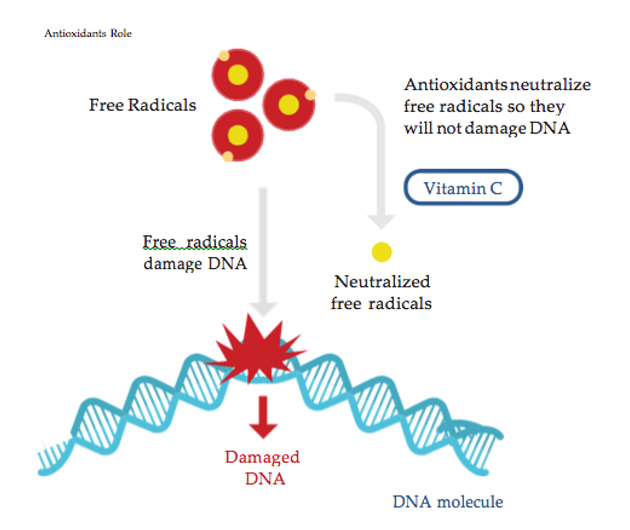
Plant Sterols
Sterols found in plants resemble cholesterol in structure and can inhibit cholesterol absorption in the human body, which can contribute to lower cholesterol levels. Plant sterols abundantly exist in fruits, vegetables, cereals, wheat bran, wheat germ, legumes, vegetable oils, nuts, and seeds. Some foods, such as margarines and yogurts are fortified with plant sterols. They work by blocking the absorption of cholesterol and lower the levels of LDL cholesterol. Its just so happens that plant sterols do not impact he level of HDL and triglycerides
Cholesterol Deficiency
A low level of cholesterol is known as hypercholesterolemia. So far, there is lack of research on the complications associated with low levels of cholesterol, however, certain research indicate levels below the norm (40mg/dL) may be linked to mental disorders, cancers and cerebral haemorrhage. Hypercholesterolemia is known to be caused diseases rather than a disease itself. Disease that can cause hypercholesterolemia include malabsorption disorders, such as coeliac disease, liver disease, Familial hypobetalipoproteinemia, Abetalipoproteinemia, tangier disease, hyperthyroidism.
Treatment will often depend on the root cause, for example if coeliac disease is the cause, then the management of coeliac disease will need to be addressed. If lack of cholesterol in the diet is the cause, then optimising nutritional intake from a selection of healthy cholesterol rich foods may be part of treatment. More than likely nutritional therapy will be addition to other treatments. As statins lower cholesterol, the prescription may need to be revised if the levels dropped below normal in a person taking statins as management for hypercholesterolemia.
Statins
Statins are a prescription medication used to lower the level of LDL cholesterol when levels are elevated.
Statins operate in two ways to reduce the amount of LDL cholesterol:
- Block the enzyme that manufactures cholesterol, therefore they stop the production of cholesterol.
- Support the reabsorption of existing LDL cholesterol that has formulated as plaques in atherosclerosis in the arteries.
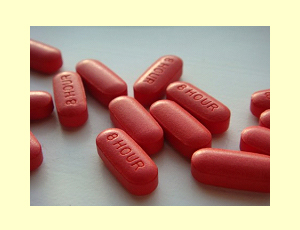
Enzymes are key components of metabolic pathways. Understanding how enzymes work and how they can be regulated are key principles behind the development of many of the pharmaceutical drugs on the market today. Biologists working in this field collaborate with other scientists to design drugs. Consider statins for example—statins is the name given to one class of drugs that can reduce cholesterol levels. These compounds are inhibitors of the enzyme HMG-CoA reductase, which is the enzyme that synthesizes cholesterol from lipids in the body. By inhibiting this enzyme, the level of cholesterol synthesized in the body can be reduced. Similarly, acetaminophen, popularly marketed under the brand name Tylenol, is an inhibitor of the enzyme cyclooxygenase. While it is used to provide relief from fever and inflammation (pain), its mechanism of action is still not completely understood.
Enhancing The Absorption Of Cholesterol
- Enhancing absorption of cholesterol will include management of the root cause (if applicable).
- Management of statins (if applicable).
- Reducing or stopping the intake of plant sterol containing foods until normal levels are established.
Dietary Sources Of Cholesterol
Eggs Eggs do not adversely impact cholesterol and can assist with HDL levels. They are also a good source of vitamins, such as vitamin B and A and also a good source of protein.
Full Fat Yogurt Full Fat Yogurt is high in cholesterol and other important nutrients for bone health including calcium, magnesium, potassium, phosphorus and zinc protein. Due the fermented properties , yogurt supports friendly bacteria in the gut.
Shellfish Shellfish is high in cholesterol and other essential nutrients, such as iron, vitamin B and protein. Shellfish is also rich in certain antioxidants and taurine that can assist in reducing the risk of heart disease.
Sardines Sardines are an excellent source of protein, iron, phosphorus, selenium, magnesium, zinc as well as cholesterol.
Organ/Offal meats Organ meats, such as liver and kidney are cholesterol rich dietary sources as well as rich in iron, zinc and antioxidant CoQ10.
Foods Rich In HDL Cholesterol
The Mediterranean Diet includes rich sources of HDL cholesterol foods.
Olive Oil Is heart friendly and helps reduce the LDL cholesterol.
Oily Fish Is a cardio protective food source rich in omega -3. Oily fish lowers the level of LDL and triglycerides and increases the level HDL cholesterol.
Wholegrains Starches May lower total cholesterol as well as LDL. This is turn increases the level of HDL This is due to the soluble fibre content, which is known lower LDL levels.
Legumes and beans Are another good source of soluble fibre and operates by lowering LDL and total cholesterol; therefore supporting HDL levels
Fruits Such as apples, berries, pears and citrus types are high in soluble fibre and therefore help lower total cholesterol and LDL and increasing HDL levels.
Free app used in the training “Introduction aux tests sanguins pour les naturopathes québécois”




